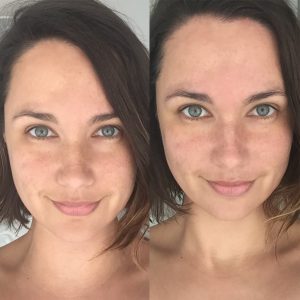The human skin produces about one million skin cells every 40 minutes, which equates to over 36 million skin cells per day. As our skin cells renew from the deeper layer of the epidermis, the more surface cells harden and lose moisture. Eventually these cells detach from skin and are replaced by younger cells moving up from deeper layers. Desquamation (detaching) also eliminates damaged and contaminated cells that carry pollutants and micro-organisms from the environment. These superficial skin cells don’t always effectively fall from skin and may cause clogging and congestion while leaving and the skin’s surface dry and dull looking. As we age, desquamation and cell turnover slow down, from approximately 20 days in younger and middle-aged adults up to over 30 days in older adults; making professional peeling and exfoliation critical to removing the accumulation of cells that give a dry, dull, hyperpigmented appearance to the skin. Chemical peels are one of the most effective ways to address these changes. But they’re not a one-size-fits-all treatment: for optimal results, a peel should be strong enough to accelerate cell turnover but not so powerful as to induce severe skin inflammation. Through professional peels, these dulling skin cells effectively removed, and newer cells are revealed for fresher, healthier appearance.

Chemical Peel, Dermalogica
Chemical peeling agents mostly are AHAs and BHAs (Alfa Hydroxy Acid and Beta Hydroxy Acid). They are keratolytic agents which break apart the snap-like bonds (corneodesmosomes) that hold dead skin cells (corneocytes) together, allowing them to shed more easily and therefore improving the skin’s texture and overall appearance. Widely considered the most versatile group of peeling agents, AHAs (including Lactic Acid, Glycolic Acid, Mandelic Acid and Malic Acid) are water-soluble and can be used at different concentrations for different effects on the skin. alpha Hydroxy Acid, makes cell turnover more natural. The skin’s barrier becomes more resilient because moisture is preserved. BHAs, like Salicylic Acid, are oil-soluble, making them an excellent treatment choice for oily and acne-prone skin. They can actually penetrate the skin through the follicles and sebaceous glands while helping to dissolve follicular implications. Salicylic Acid, increases desquamation; while enzymes like protease enzyme also help to shed dead skin cells, leaving skin much smoother.
Chemical peels are an excellent treatment choice for a wide range of skin concerns, from acne, acne scars, hyperpigmentation (age spots, sun spots), rosacea, fine lines to advanced sign of aging such as wrinkles and sagging skin. Skin analysis by your Skin Therapist will determine which facial peel treatment is right for you. Despite their varying uses, most peels work the same way, they remove the skin’s outermost layers to stimulate cell renewal and cell turnover, improving skin’s texture and appearance. Collagen production also is improved because Glycosaminoglycans increase and pore size is reduced, complexion is brightened.
professional peels vs. at-home peels
Chemical Peels designed to be applied by licensed Professional Skin Therapists – like Pro Power Peel – tend to be more concentrated and customizable to deliver more dramatic results. These formulas are usually not available to clients for self-application. Peels designed to be used by clients at home tend to be lighter in nature. They are ideal for quick, easy removal of dulling surface cells, as well as building the skin’s tolerance for stronger professional peels and maintaining results in between professional treatments. At Nell Clinic we use professional chemical peels such as Lactic acid peel and Pro Power Peel from Dermalogica which approved by Health Canada.
Please call for a complementary consultation at 416-228-0011


